Abstract
Using data from a 1974 household survey, accessibility to ambulatory care is compared for residents of an inner-city area (East Baltimore) whose usual source of care is an HMO (the East Baltimore Medical Plan) and residents of the same area with other usual sources of care. Accessibility is measured by the probability of receiving care for an episode of illness. Results from multivariate linear and probit regressions indicate that children using the HMO are more likely to receive care than are children with other usual care sources, but no significant differences in the probability of receiving care are found among adults. Evidence of a substitution of telephone care for in-person care is also found among persons using the HMO. Data from a 1971 household survey of the same area suggest that selectivity is not an important confounding factor in the analysis.
Full text
PDF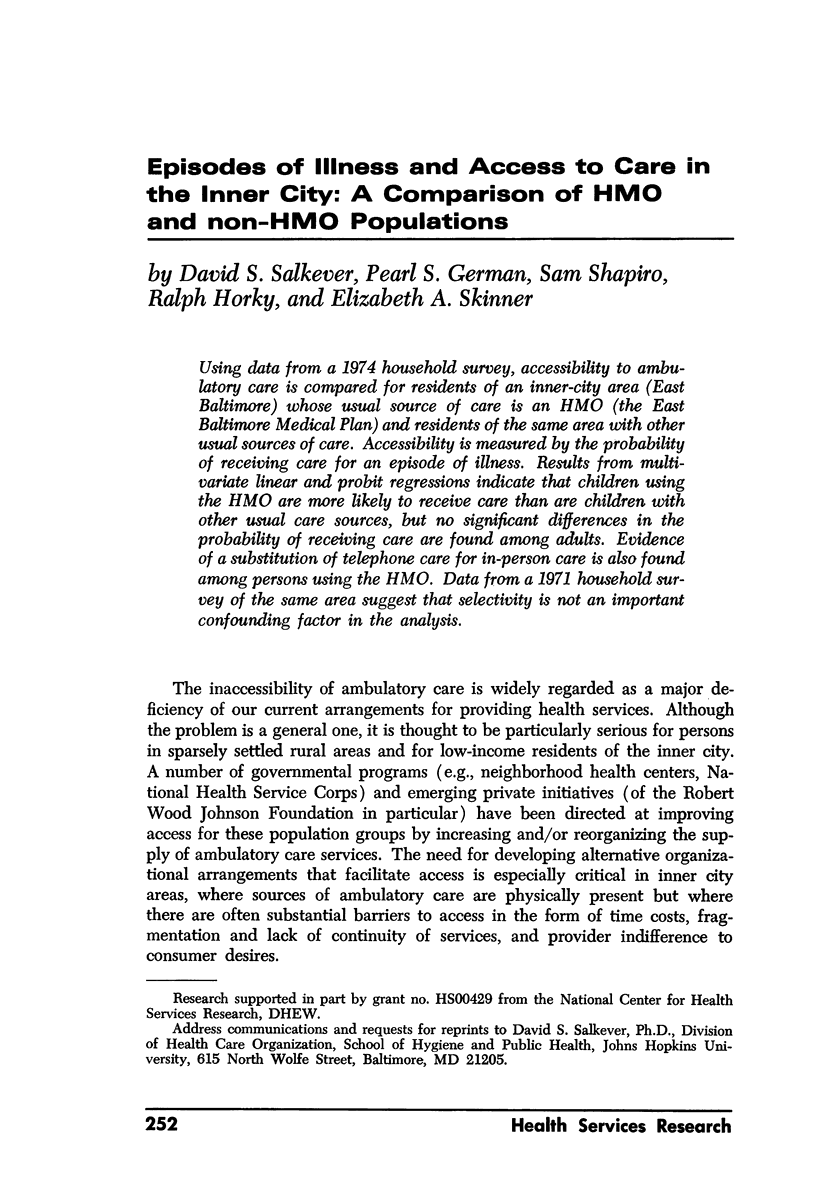
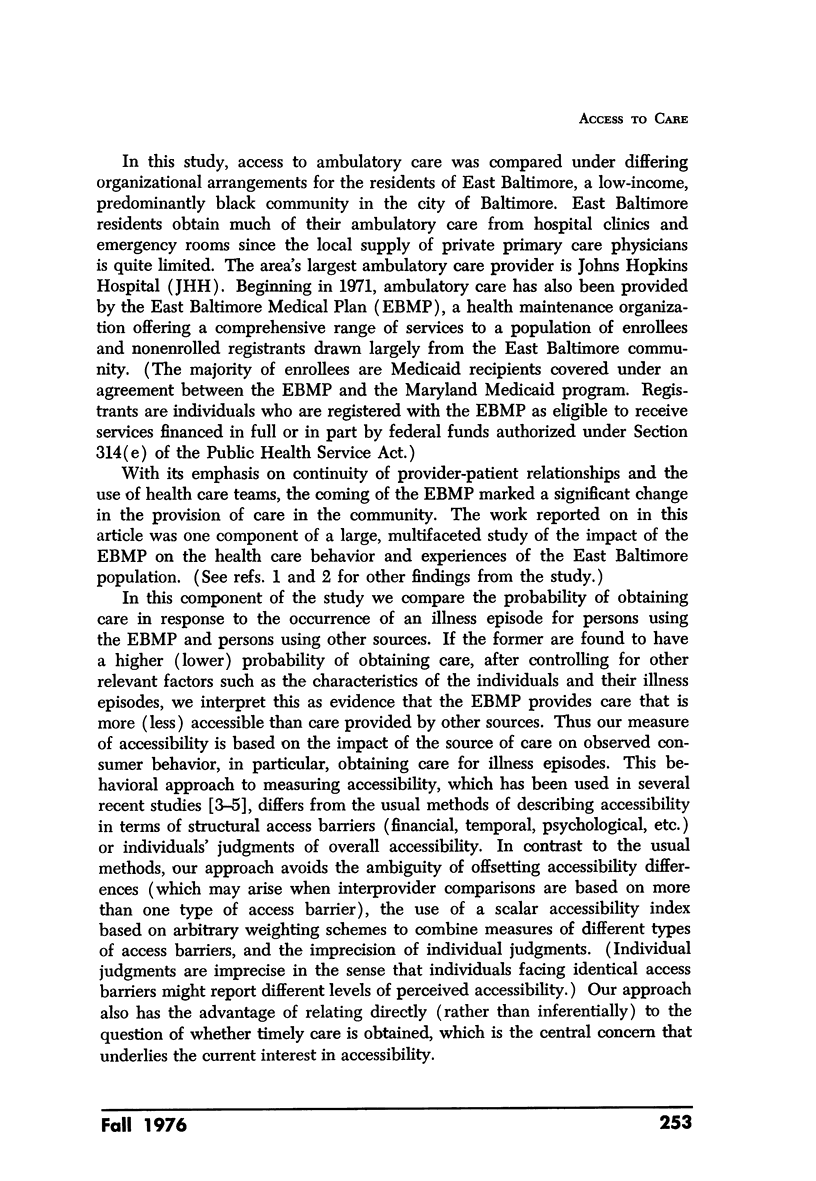
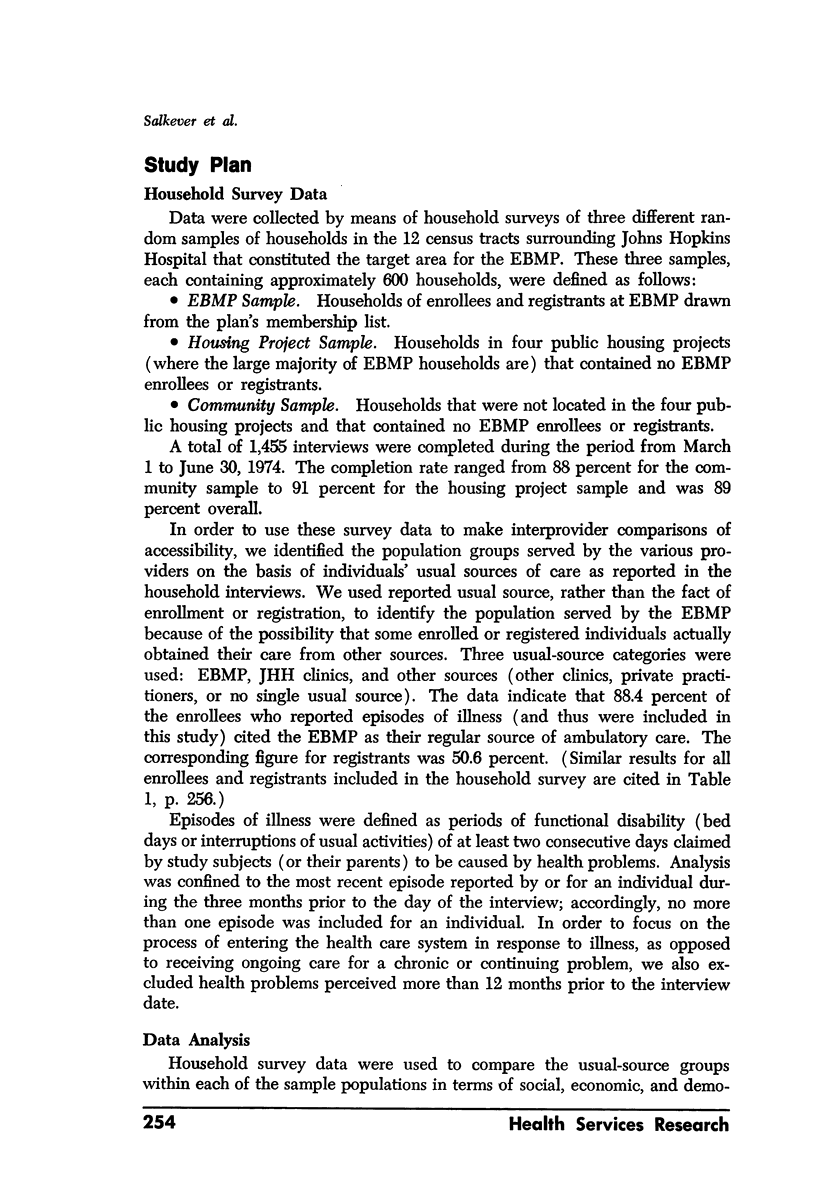
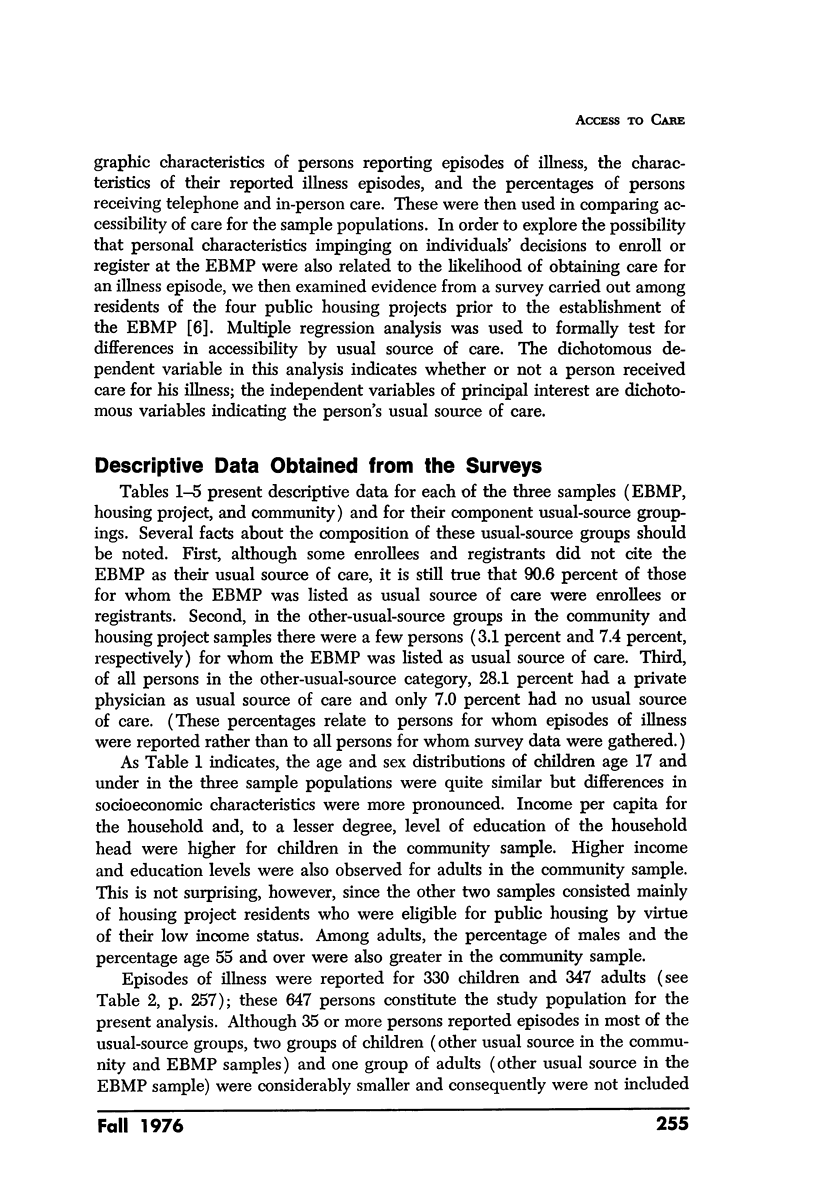
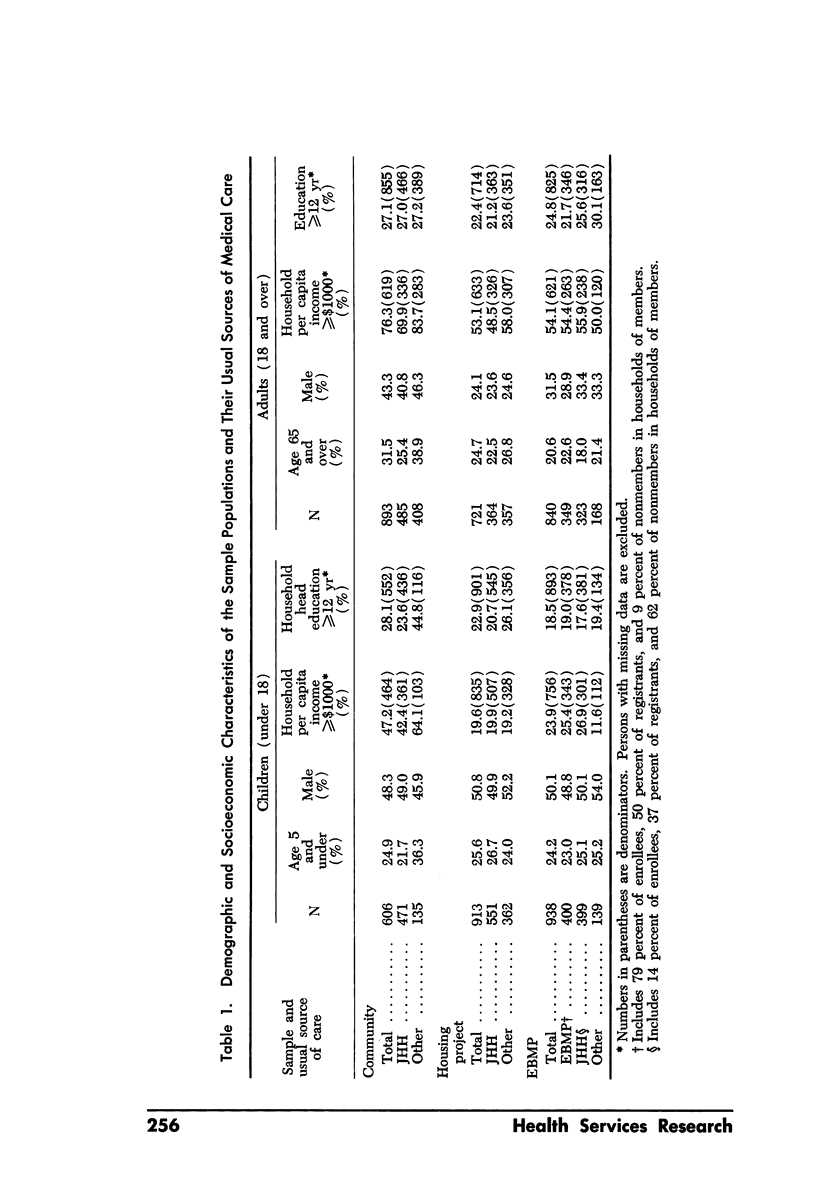
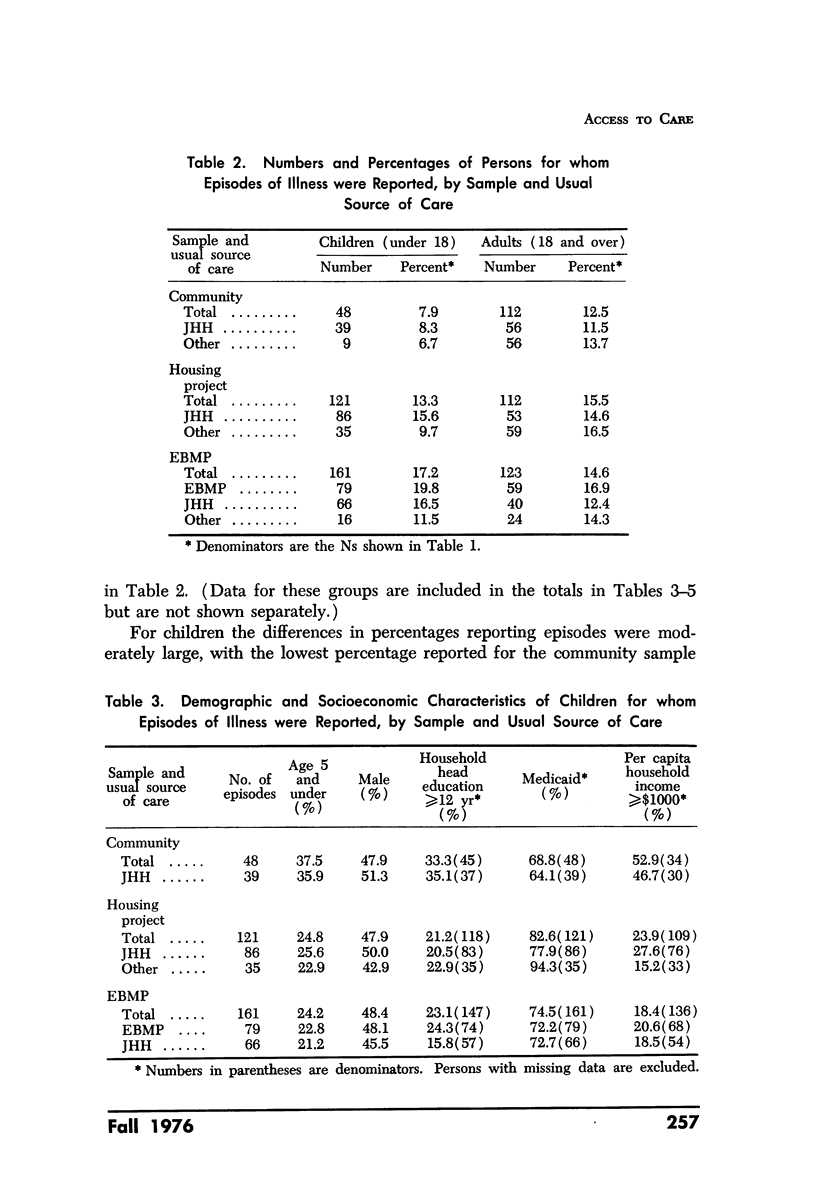

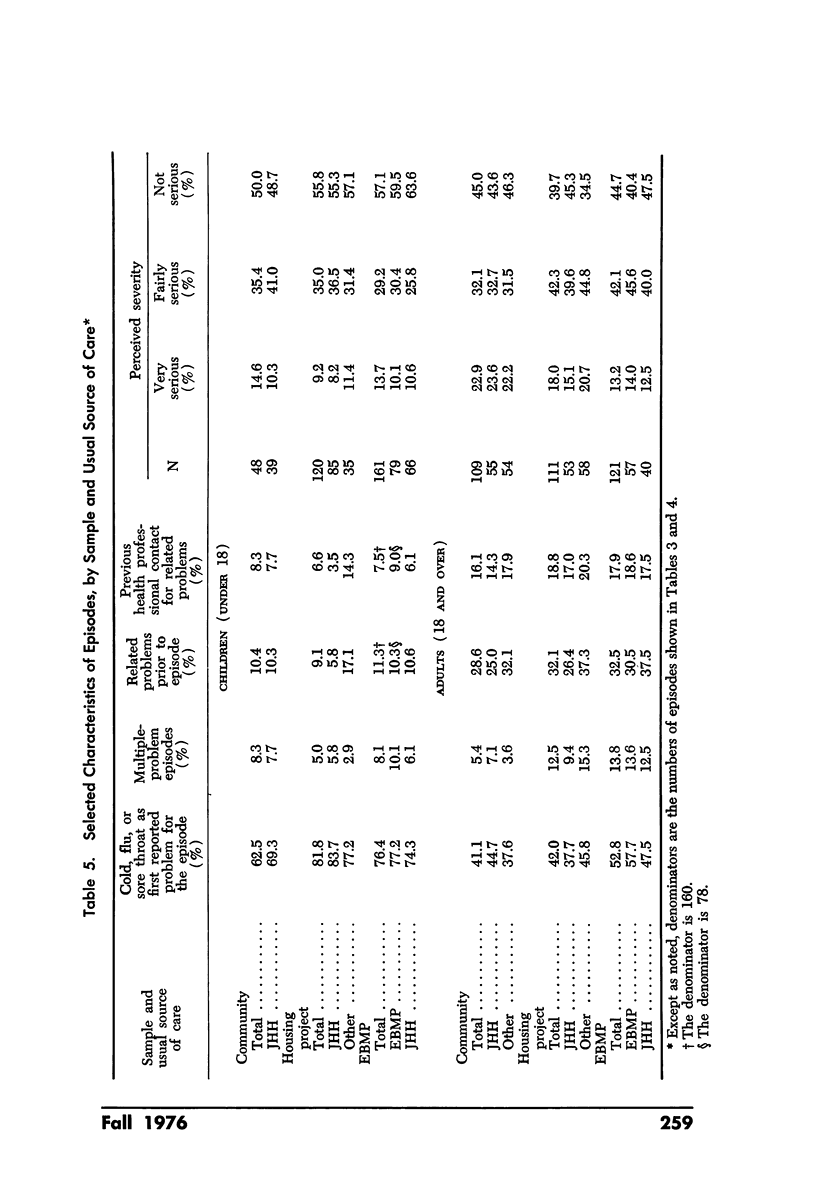
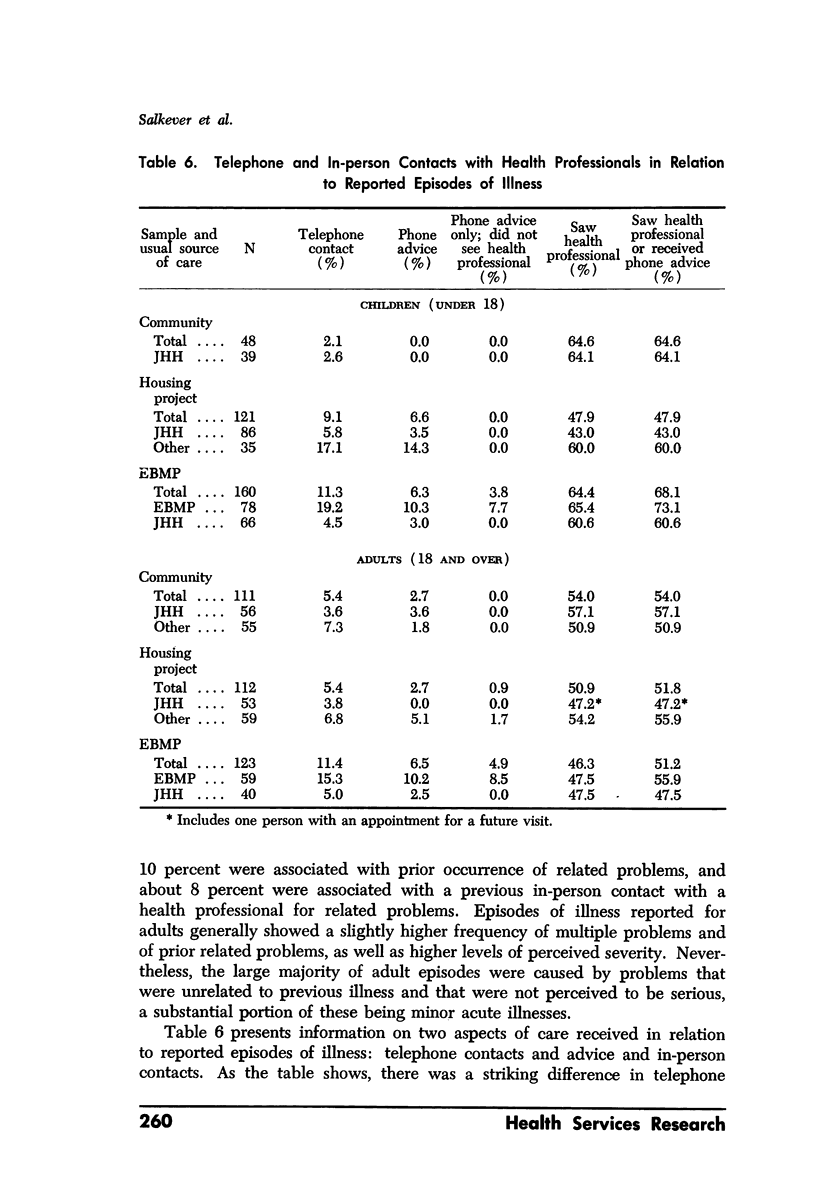
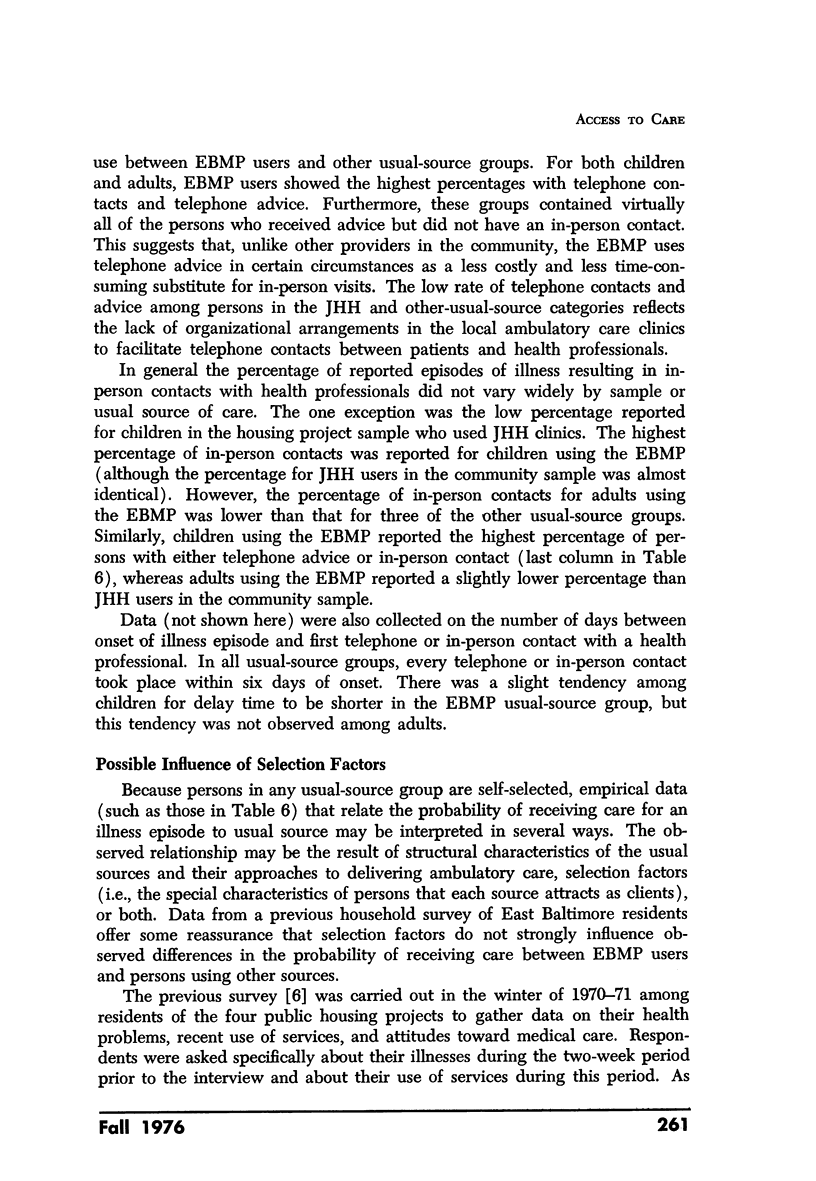
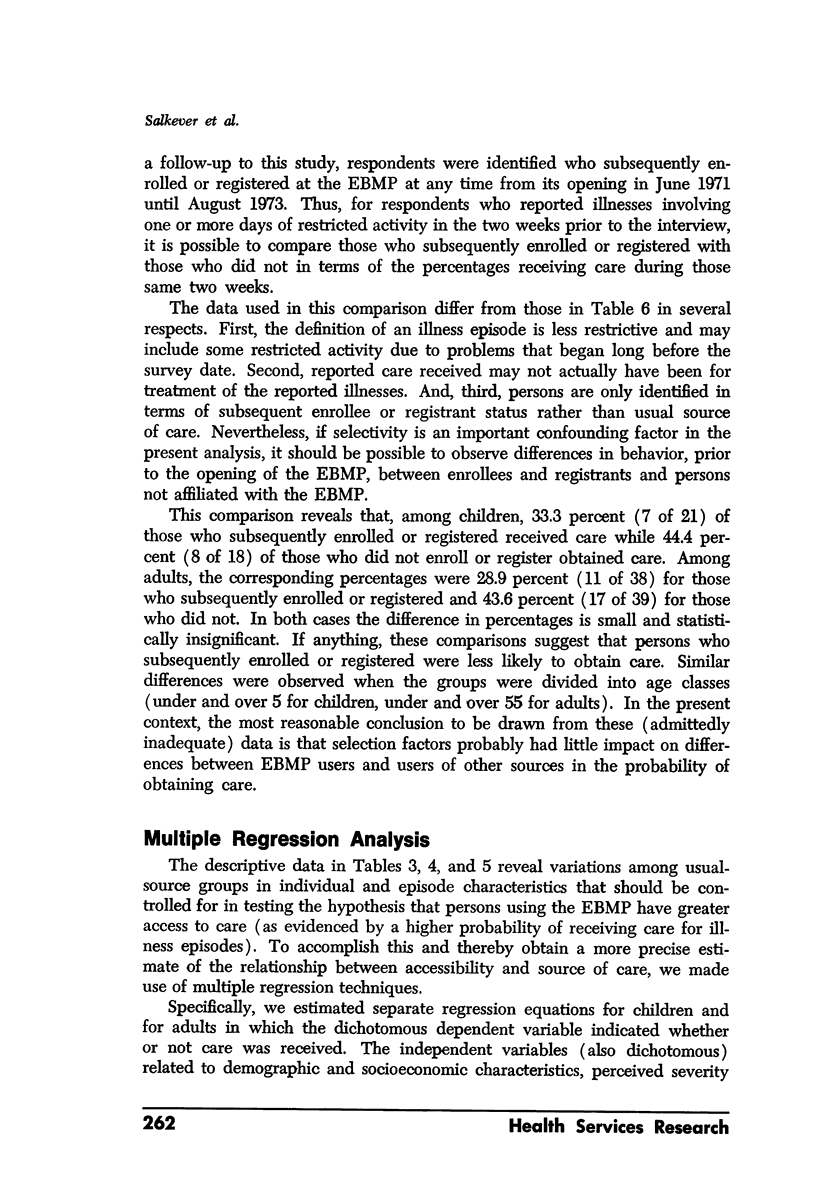
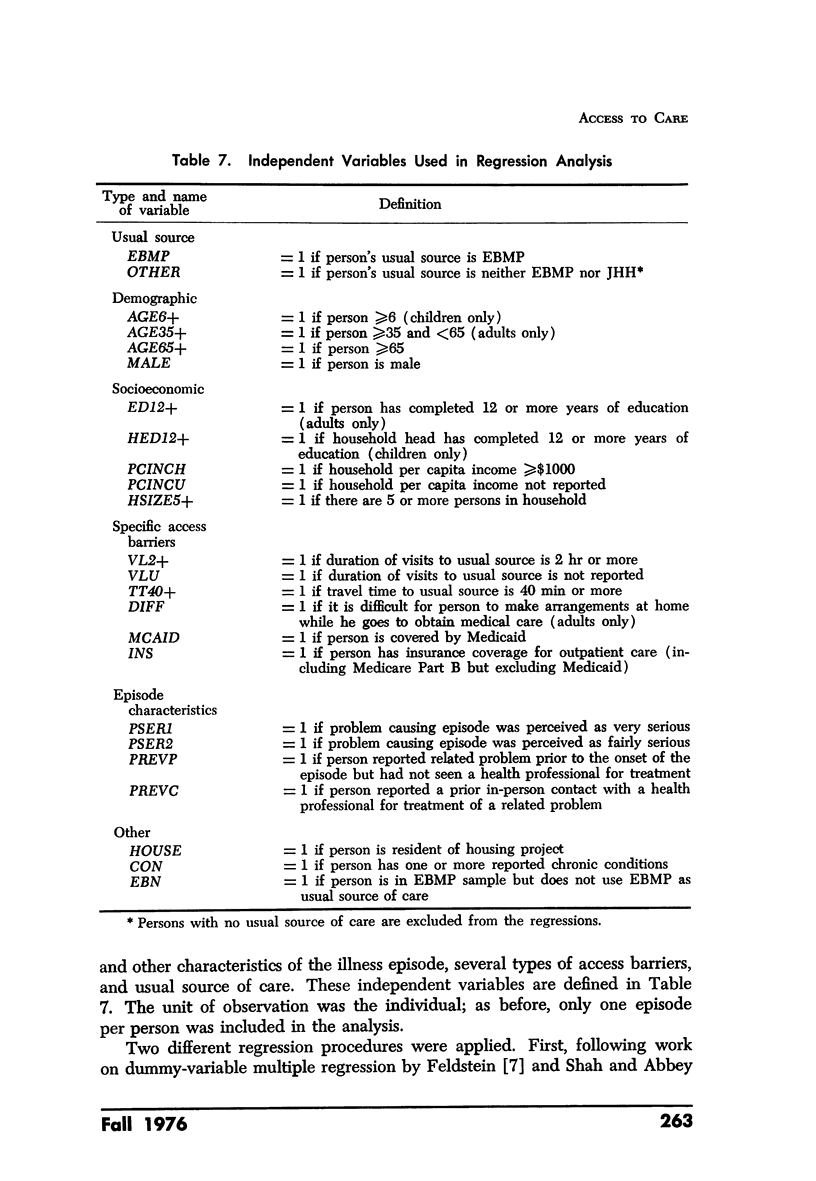
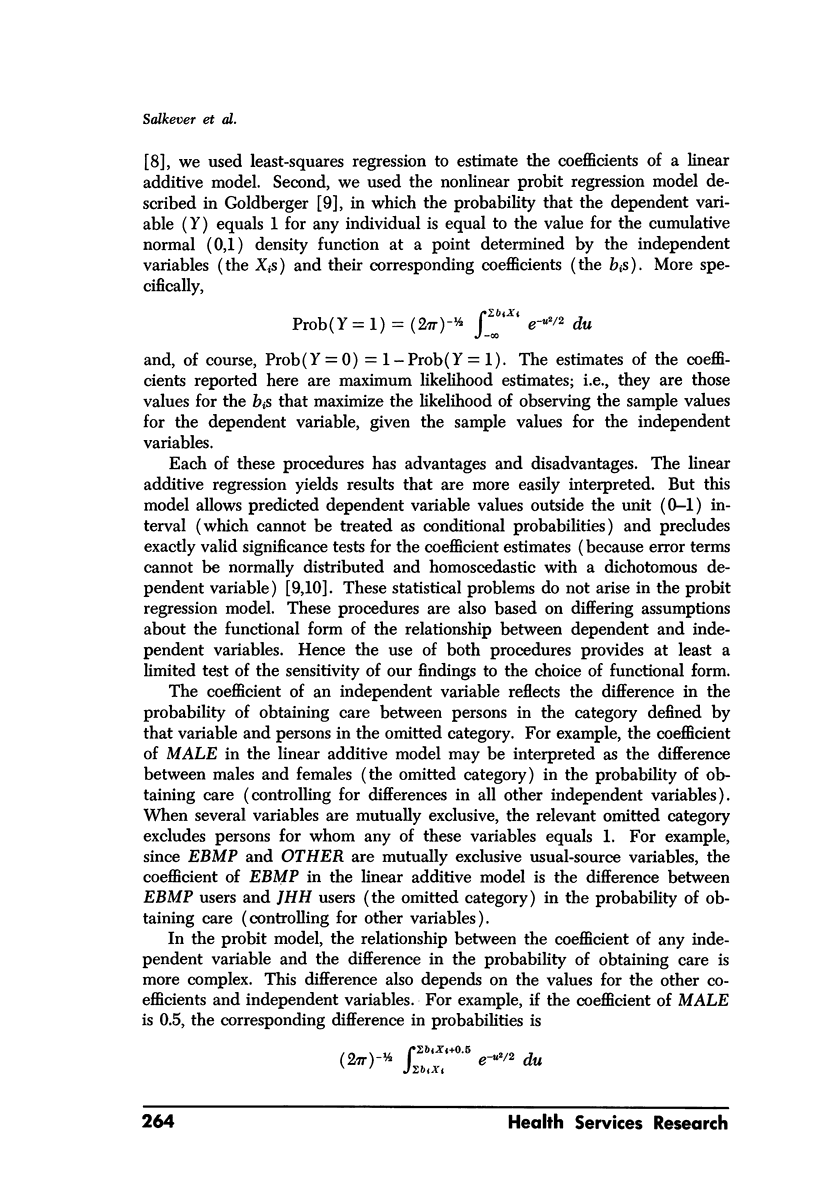
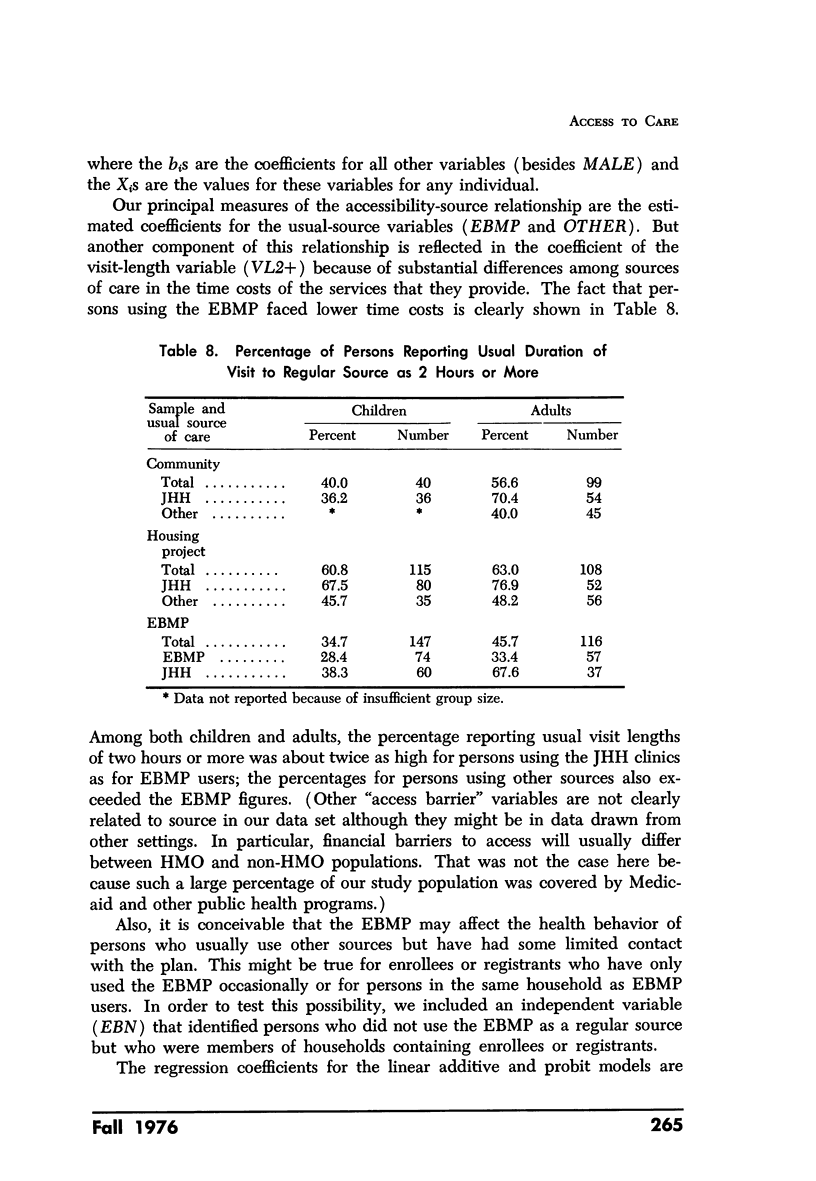
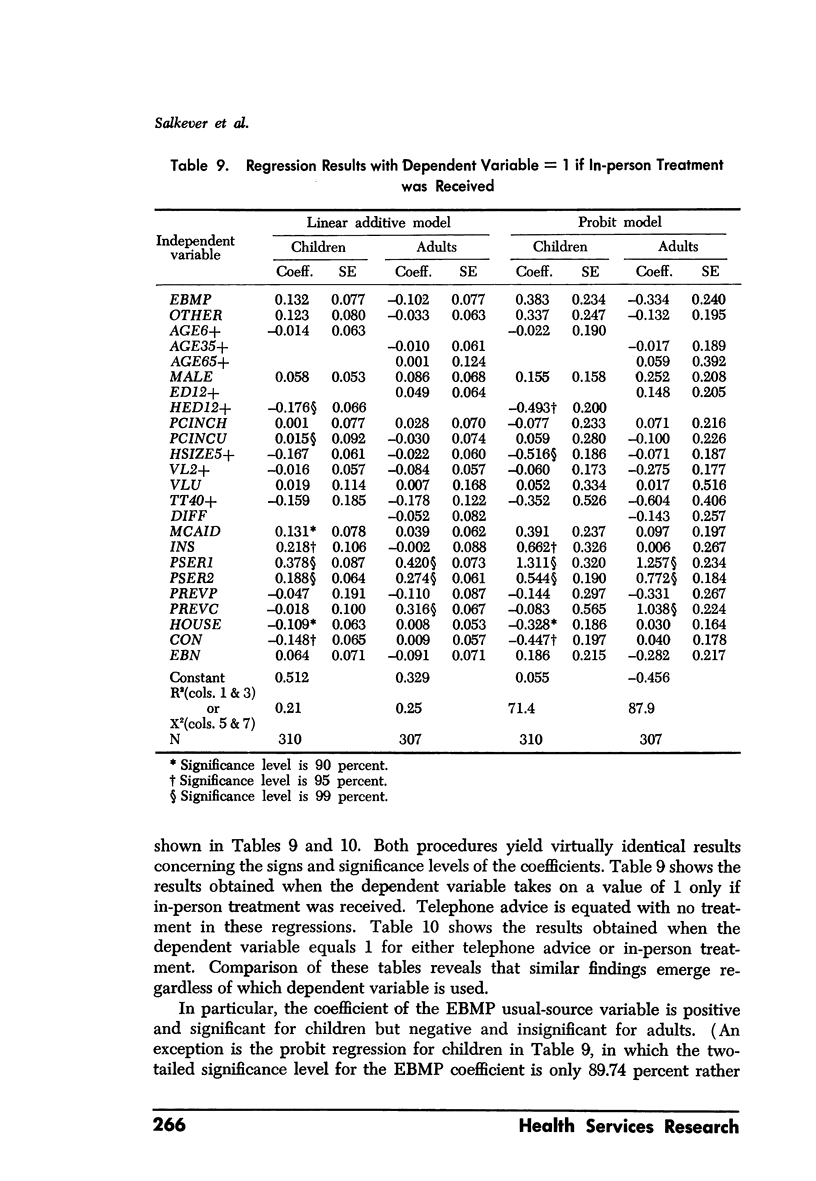
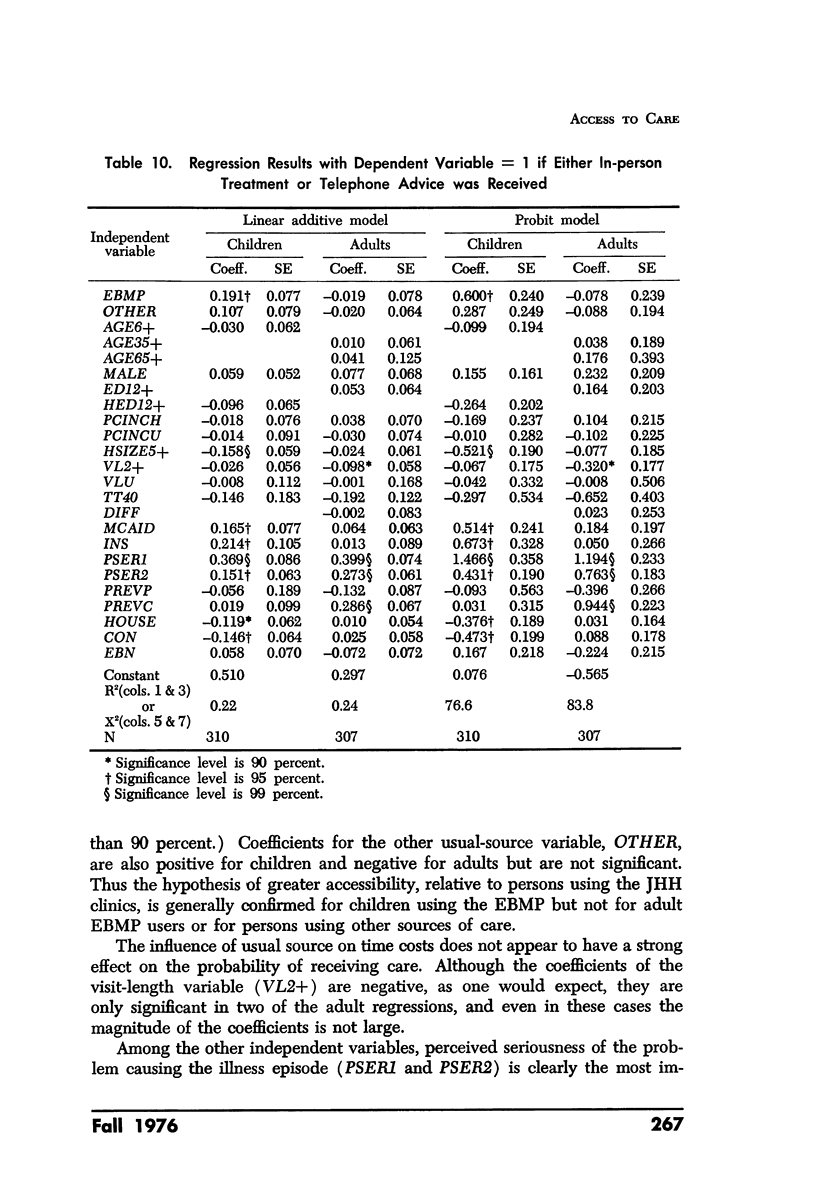
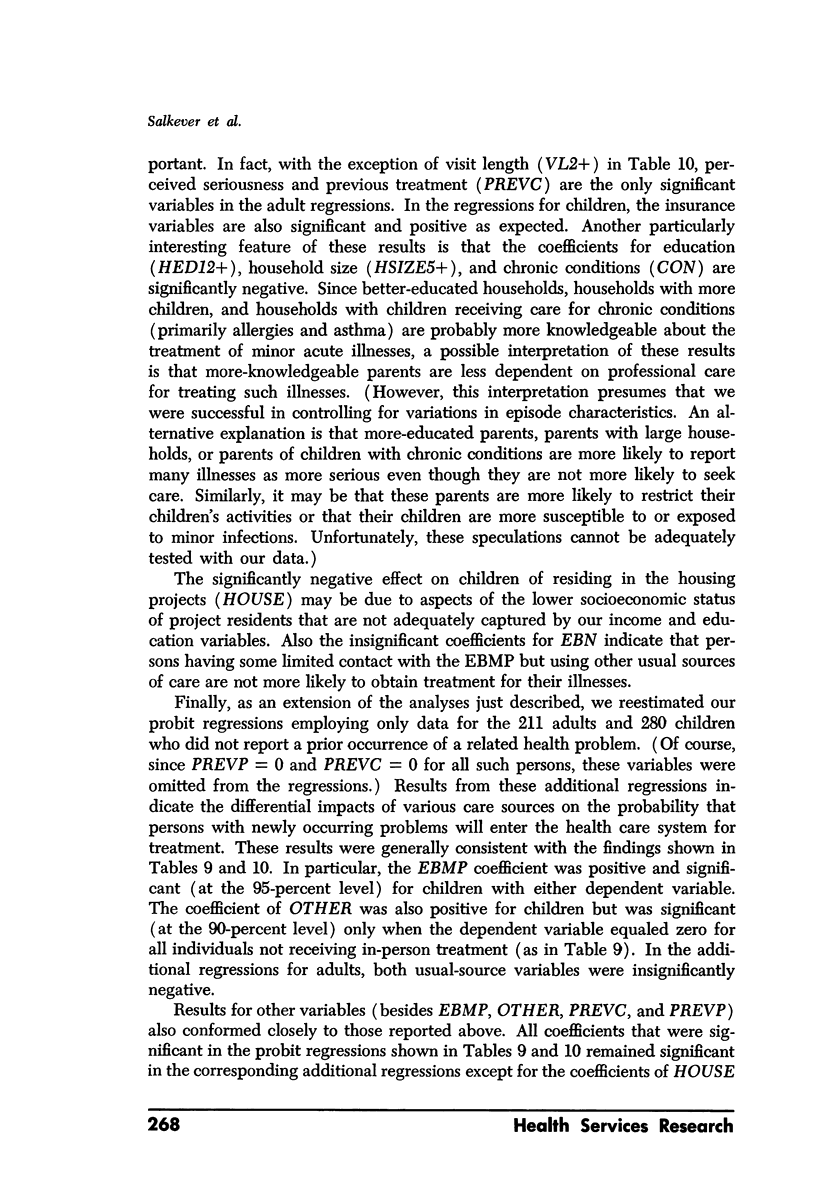
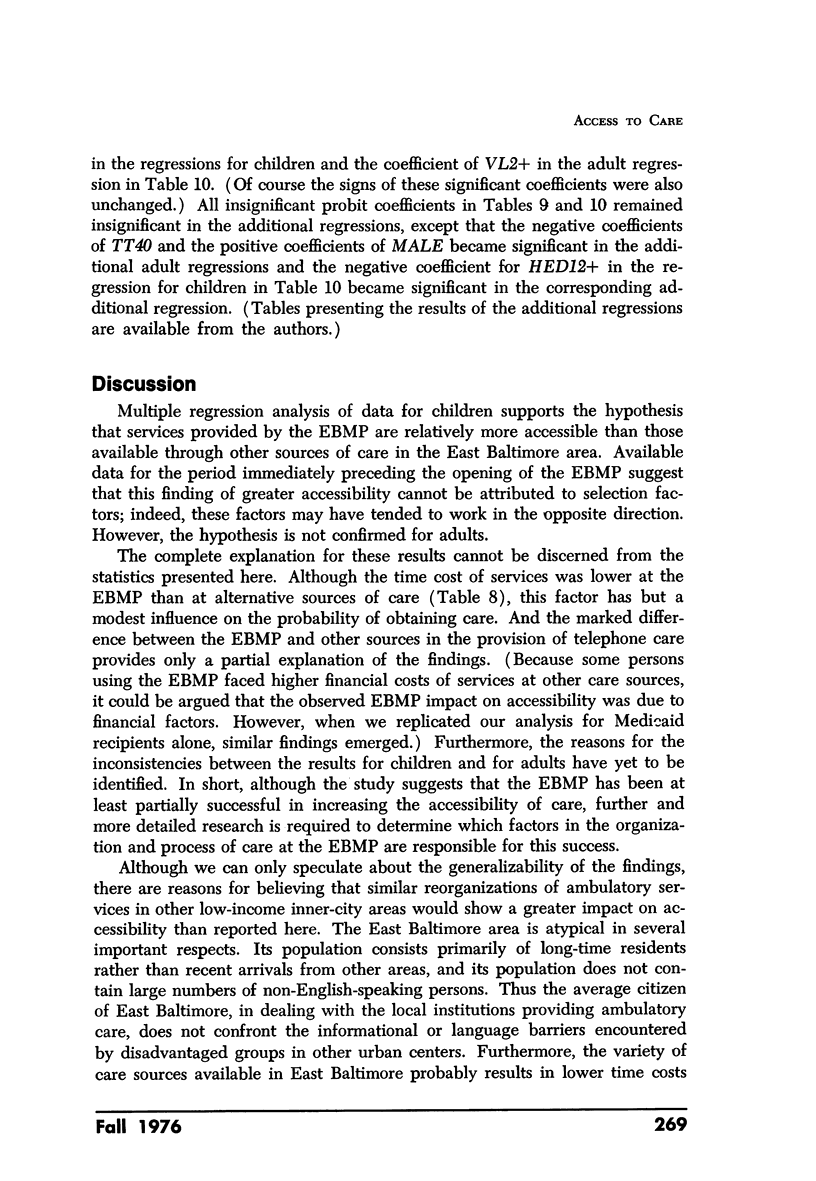
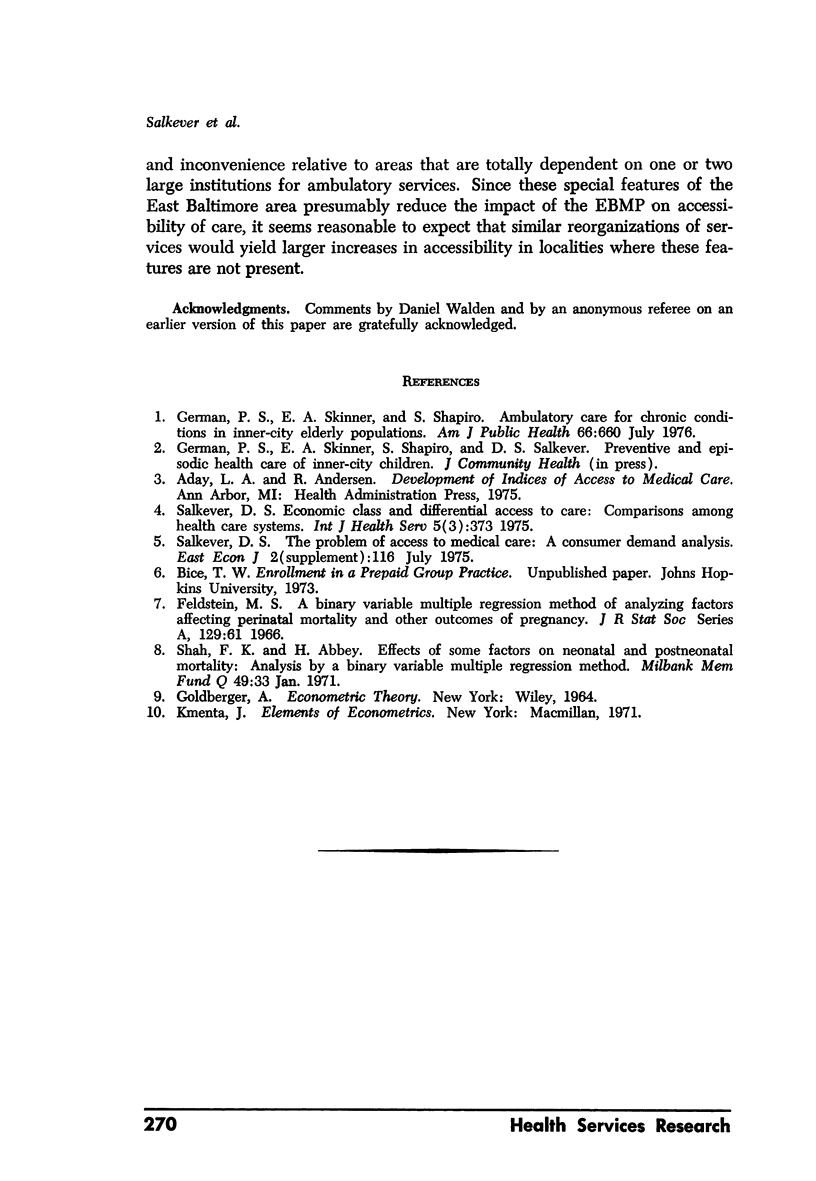
Selected References
These references are in PubMed. This may not be the complete list of references from this article.
- German P. S., Skinner E. Z., Shapiro S. Ambulatory care for chronic conditions in an inner-city elderly population. Am J Public Health. 1976 Jul;66(7):660–666. doi: 10.2105/ajph.66.7.660. [DOI] [PMC free article] [PubMed] [Google Scholar]
- Salkever D. S. Economic class and differential access to care: comparisons among health care systems. Int J Health Serv. 1975;5(3):373–395. doi: 10.2190/EAM3-DV29-1FNG-C1UC. [DOI] [PubMed] [Google Scholar]
- Shah F. K., Abbey H. Effects of some factors on neonatal and postneonatal mortality. Analysis by a binary variable multiple regression method. Milbank Mem Fund Q. 1971 Jan;49(1):33–57. [PubMed] [Google Scholar]


